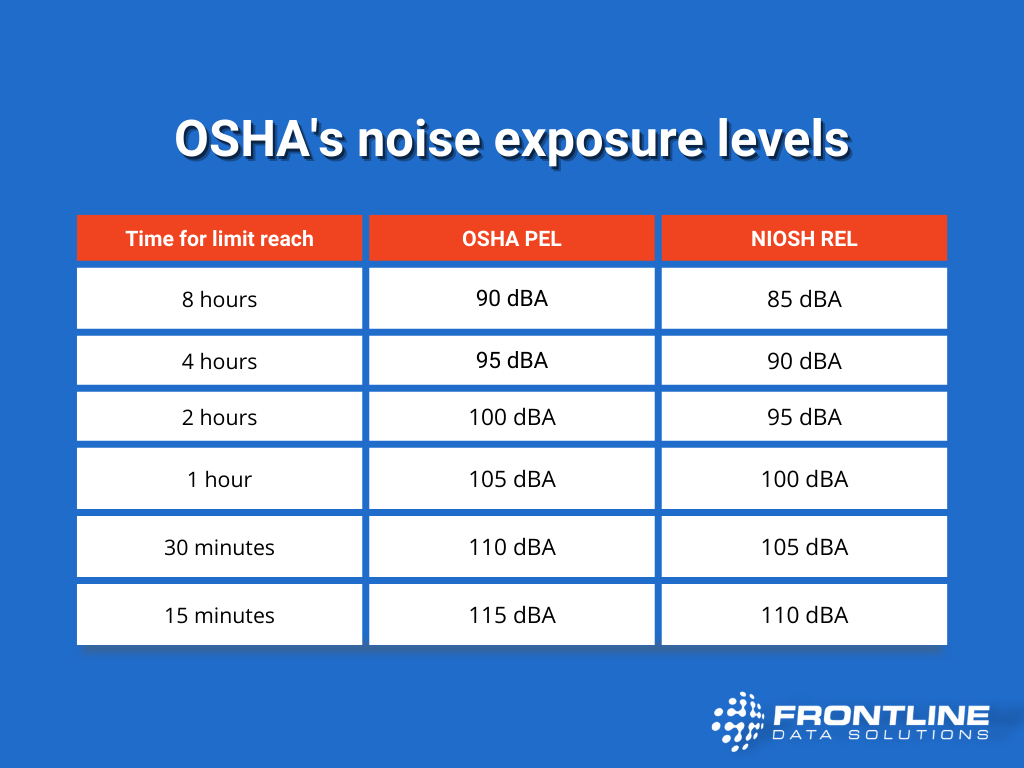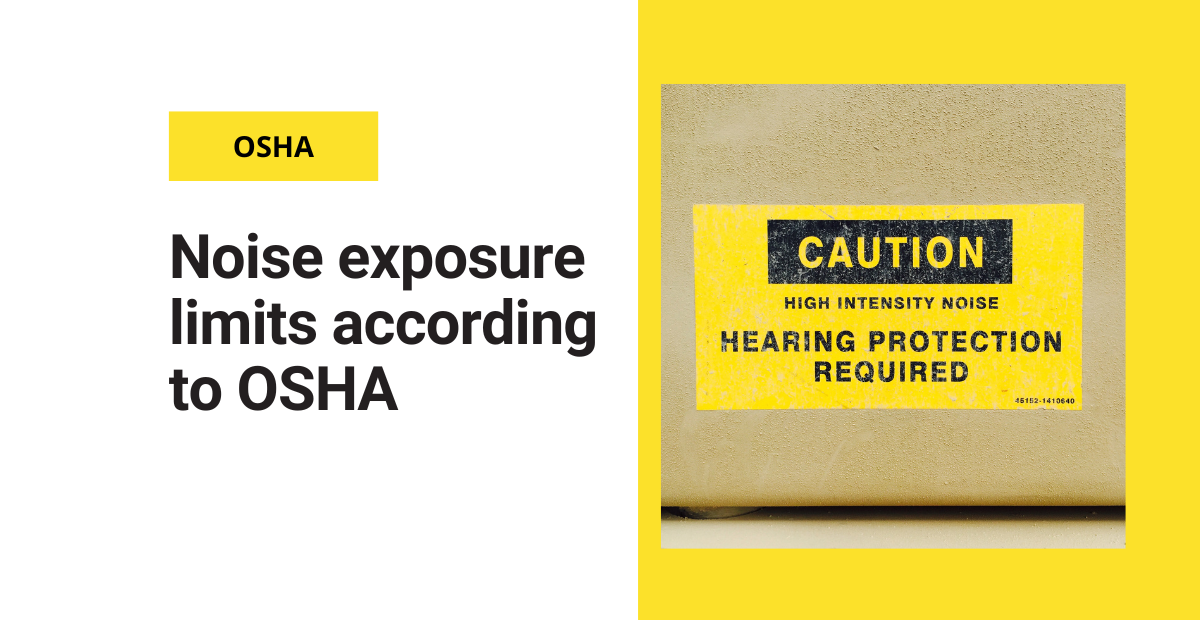Excessive exposure to noise in the workplace can lead to serious health effects. Examples include things like hearing impairment, hearing loss, or tinnitus. Still, noise exposure is one of the most preventable workplace injuries. That is why OSHA sets legal noise exposure limits for the workplace. The regulations protect workers from health risks, which can happen when they are exposed to noise for a certain amount of time.
OSHA refers to these noise exposure limits as “permissible exposure limits” (PELs. There is also an “action level” set forth by OSHA where an employer has to start providing the necessary protections.
OSHA’s noise exposure limit
OSHA requires employers to provide hearing protection when employees are exposed to levels of 85 dBA or more over an 8-hour period. Levels above 85 dBA are considered the “action level” where employers ensure protective measures are taken. This includes all employees, regardless of their age or physical condition.
It is recommended that workers are not exposed to noise more than 85 dB over an eight-hour period because this level is below that may cause permanent hearing damage.
The following table shows the OSHA PELs for employees exposed to noise (in decibels):

The rule OSHA abides by when determining these numbers is that when there is a 5 dBA increase, the time of exposure should be reduced by half.
Noise exposure controls
When noise levels exceed this limit, employers must implement controls to reduce worker exposure. These controls may cover hearing protection and engineering measures. Examples of these measures include enclosing noisy processes or redesigning equipment to ensure lower decibels. Employers have to keep records of their noise control efforts and the measurements they take to determine the controls’ effectiveness.
If the employer doesn’t have a feasible way to reduce noise levels below the action level, they must institute hearing conservation programs. Those programs must include hearing protection devices (HPDs).
To stay on the safe side, you can rely on the NIOSH Sound Level Meter App. It was developed by hearing loss experts to track and measure the noise levels in an environment. For more information, make sure to look at OSHA’s regulations on noise exposure limits.



